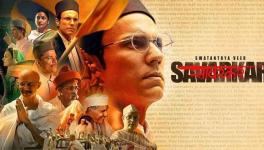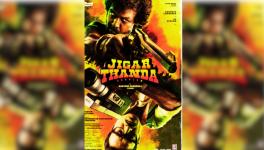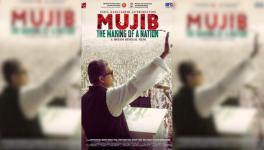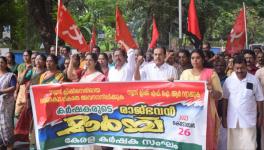Culture of Censorship in Manipuri Cinema
In the past week, Kamal Hassan’s Vishwaroopam apparently joined the long list of Indian films which have induced either social or political controversies in the country. Some Muslim organizations in Tamil Nadu had expressed their objection to certain scenes in the film which purportedly portray Muslims in bad light. The controversy around Vishwaroopam has brought the debate over censorship to the forefront in the Indian media once again. In another recent incident, some Hindutva goons attacked a Dalit college professor for his critique of caste oppression during one of his lectures. The attack blatantly portrays that even classroom education can be censored by the goons on the streets.
“Conventionally, censorship, in India, is a series of doors which keep opening. You think you are fighting the ever-present reality of the state but then you encounter the censorship of the market. And of course, in the last decade, more than anything else, it is the censorship of the street which is perhaps the most difficult to negotiate because it is faceless. Any ten people could call off a show, a film or a lecture,” said Filmmaker Sanjay Kak who chaired the panel on ‘Film Culture and Censorship in Manipur’. The discussion was part of a two-day festival of the North-East -- ‘Cultures of Peace’ – organized by Zubaan, in collaboration with Heinrich Boll Stiftung and Khublei at the India Habitat Centre from 18th - 19th January this year.
The members on the panel included Oinam Doren, screenwriter and national award-winning filmmaker; Mamta Murthy, filmmaker, photographer and curator in Mumbai. She is best known for her first feature film Fried fish, chicken soup & a premiere show; L. Somi Roy, writer, filmmaker, film and media curator, and an art producer in New York; and Bimol Akoijam, an associate professor at the Centre for Study of Social Systems, JNU. He has also written and directed short films and plays.
Cinema in Manipur has many similarities with the Bollywood flicks made in the expensive studios in Mumbai. But those similarities have not been recognized in the mainstream media. Manipur, like its other North-East counterparts, becomes imperative to mainland India only when the media sniffs fresh troubles from the centuries-old problems in the region. In Manipur, in particular, these media-attracting ‘attributes’ have been AFSPA and Irom Sharmila.
However, a cinema-lover, with his/her heart in exploring regional cinemas, would discover that Manipuri films have borrowed so much from Bollywood in the form of story and style. In Imphalwood (Manipur film industry), the movies are made by the Meiteis --the non-tribal Hindus-- in Manipuri language. After a period of Bollywood films dominating the cinema houses in Manipur, some clandestine organizations imposed cultural regimentation and banned screening of Indian movies there. The Film Forum of Manipur has also regulated itself on the lines of Manipuri culture, shunning everything that is not Meiteis.
"We have the Indian Censor Board in Guwhati. Other than that, we have two censor boards in Manipur. One is the Film Forum and the other is AMMIK (Apunba Manipur Matam Ishei Kanglup for music). If you make a music video in Manipur, first you have to send your lyrics and the song to AMIK. They’ll screen your song and lyrics, and give you a certificate. Once you have the certificate, you start making your music video. And once, the music video is done, you go to the film forum and they screen [the video] again. They give you a certificate and release it in the market or go to the local cable network for telecast." On the other hand, filmmakers send their films to the Film Forum where the Preview Committee will screen the film and give them a certificate if they approve it. Then the filmmakers go to Guwhati and get a certificate from the Central Board of Film Certification.
Sketching the DOs and DON'Ts in Imphalwood, Oinam Doren stated that one "cannot use the words 'mummy' and 'daddy' in Manipuri cinema.” The words need to be replaced by Manipuri equivalents. He also said that filmmakers cannot give English or mainland Indian names to their characters, but only local Manipuri ones. The list of things which are banned in Manipuri films comprise commonly used items in mainland Indian films: saree, fake eyelashes, bindi, sindoor, kajal, mini skirts, backless costumes, and kurta pajama. Doren went on to explain why filmmakers in Manipur take the film forum seriously. He briefed the audience about an incident which took place about ten years ago in which a young woman was shot at by some people because she acted in an erotic film. Other people involved in the movie have either fled the state, or have been executed. A famous actress from Manipuri Cinema is banned from acting in the region’s movies because she recently acted in a Bollywood film. "Another famous actress is banned from acting in Manipuri cinema because she married a non-Manipuri," he said.
Mamta Murthy narrated her experience while making Fried fish, chicken soup & a premiere show. "I went to Manipur because I was commissioned to make a film on other independent cinemas in the country. I had a simple ambition. I just wanted to chronicle another independent cinema," she said. Describing how conflict permeates all aspects of society and life, she said that "not only does every aspect gets affected, but it almost gets defined by it [conflict]. A simple act of making popular film for instance becomes cultural assertion. And therein comes the concept of censorship by the film forum."
Her film follows a Manipuri film titled Kunti. Interestingly, the film has a mainland Indian name as its title. The Film Forum expressed their disapproval towards a character in the film who wanted to have chicken soup. Another point at which the Film Forum censured the makers of Kunti was when a couple in the film changes costumes in a song. The director had tried to explain to the Forum that in the beginning of the song the couple was dating and by the end of the song, they were married and had a child. Hence, a change in costumes. But because it seemed to have been inspired from Bollywood films, the Film Forum did not let it pass. Murthy said that filmmakers in Manipur tacitly support the Film Forum at least in the context of reclaiming the Meiteis culture. But "if you support it [censorship] at one level, it is going to come back and bite you at another level," she said.
Sanjay Kak, too, drew attention to "the eternal paradox of censorship" and said that filmmakers often believe that "censorship is good so long as good people are doing it, and censorship is bad when bad people do it." But what is to be understood is that censorship "is not a stick; it is a snake. It can turn around and bite you when it chooses to." Kak expressed that filmmakers regard the Film Forum because they believe it protects them from the street censorship, but the downside is that filmmakers hand over their right to decide to the people on the panel. Kak highlighted that one cannot make a case for free speech unless one is ready to listen fearlessly. "I might not like the lyrics of Honey Singh's song C*** but I am not going to ask for him to be banned. I am going to say that he should be exposed. Public displeasure should make him shut up. But this business of seeking to control is always something that is going to come back to haunt us."
L. Somi Roy, through his anecdotes, narrated his professional and personal encounters with censorship in relation to Manipuri cinema. Bollywood movies were banned in Manipur in 2000. When Roy went to Manipur after a long absence, he found that "all the cinema halls were shut down and had been turned into shopping malls. I came back the next year and Manipur digital film industry had started and there were 30 films being made. They were all copies of Bollywood. One of them was a shot-by-shot remake of Devdas starring Shah Rukh Khan in Manipuri costumes," he said.
Then in 2005, the Central Library was set on fire because all the books there were in Bengali script. In 2007, the Museum of Modern Art in the US had a screening of a series of Indian films called 'India Now'. Paban Kumar Haobam's A Cry in the Dark was one of the films in this series. "[It] is a horrific film about a protest against a rape case by the army in Manipur, and a man who self-immolated. My friends at the Museum of Modern Art told me that this film was requested by the Consultant General in Los Angeles for it to be dropped from the series. There was another film on the Gujarat riots that the Consultant General was also not comfortable with. So there was a bit of censorship on that side of the ocean as well," Roy said.
Roy has worked with the Film Forum on two different occasions during which he happened to witness the other side of Film Forum which stood up for the film fraternity. "I did a festival called 'Replay,' which is a film festival on sports and performance -- the two things that Manipuris are good at. And the second 'Replay' was almost cancelled because of an impending strike led by Film Forum.” The strike was an embodiment of support by the Film Forum for the film producers who were demanded an unrevealed sum of money by an armed guerilla outfit. “It’s a real mix bag,” Roy concluded.
Bimol Akoijam briefed on how film screening entered Manipur and how the Manipuris got into film-making. “The thought of having a Manipuri feature film was born to us in the late 1960s and it became a reality in 1972 and the first full-length Manipuri feature film was screened called Matamgi Manipur (Modern day’s Manipur),” he said.
The 70s was a successful decade in the Manipuri Cinema. A Manipuri film Olangthagee Wangmadasoo directed by Aribam Syam Sharma was as huge a blockbuster as Sholay. The 1980s brought a shift in Manipuri culture, led by Aribam Syam Sharma. “He abandoned his Bollywood-style song [and] dance, and he went on to make a very serious film named Imagi Ningthem,” he said. The 90s saw a decline in Manipuri cinema and “it was complicated by the emergence of very violent confrontations and multi-layered conflict in Manipur.” This is when Hindi films were banned. He further talked about the emergence of digital films in Manipur.
Akoijam pointed out that the Indian state never had censorship issues with Manipuri feature films because Manipuri filmmakers are not considered to be politically grounded. “There are images in the documentary genre which might disturb India... but again those are not deployed as critical vantage points,” he said. But talking about his in-production film, he said, “You have to be political when you make movies.”
Sanjay Kak concluded by saying that “you can fight censorship only when you have a relationship with your audience. The romance is the romance between the filmmaker and the audience which Bollywood recognizes but only via the ticket counter.”
Disclaimer: The views expressed here are the author's personal views, and do not necessarily represent the views of Newsclick.
Get the latest reports & analysis with people's perspective on Protests, movements & deep analytical videos, discussions of the current affairs in your Telegram app. Subscribe to NewsClick's Telegram channel & get Real-Time updates on stories, as they get published on our website.
























